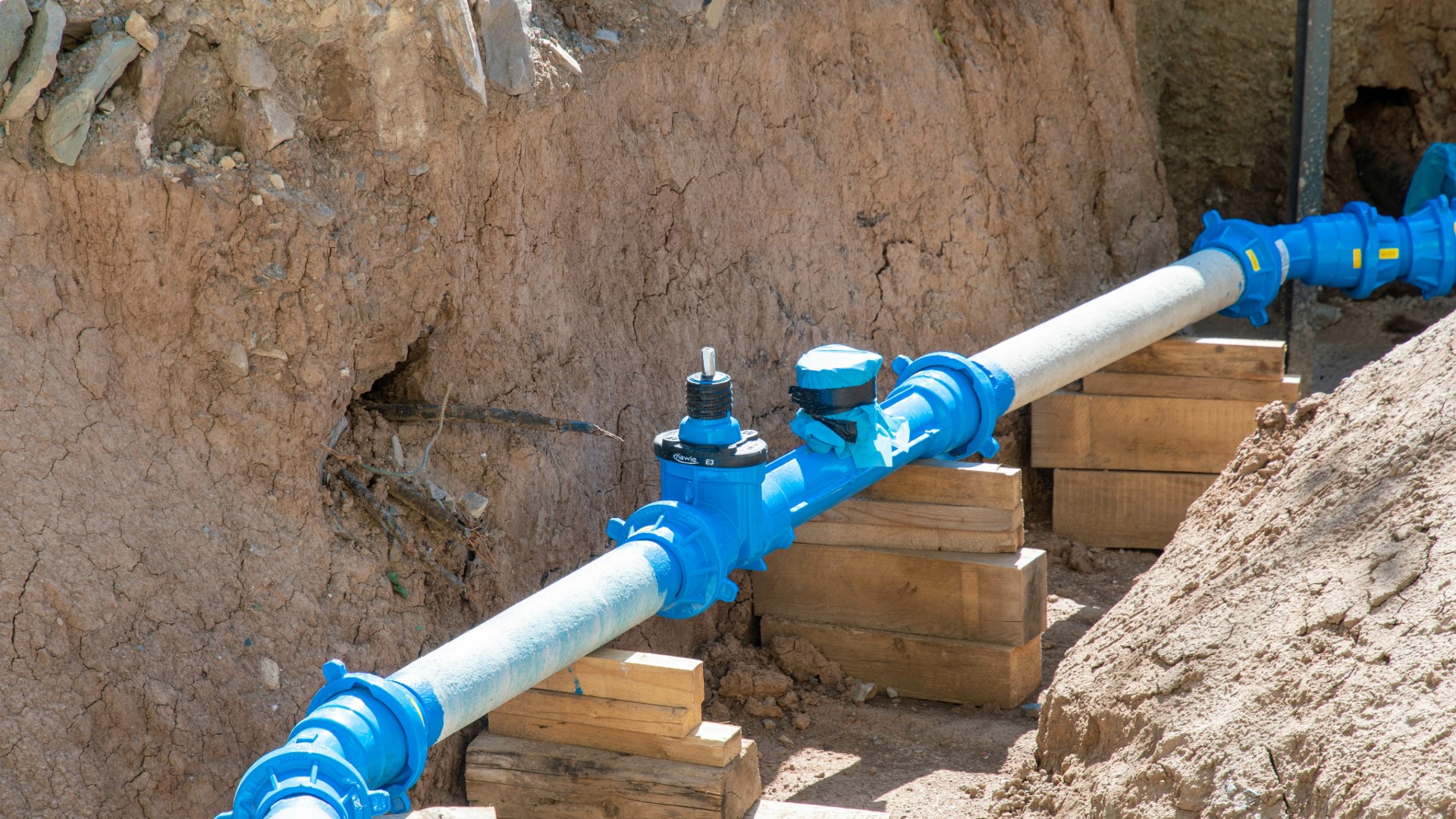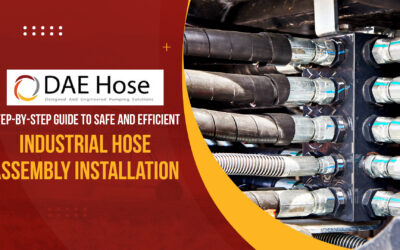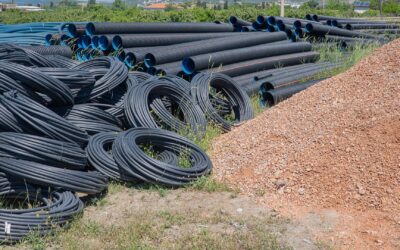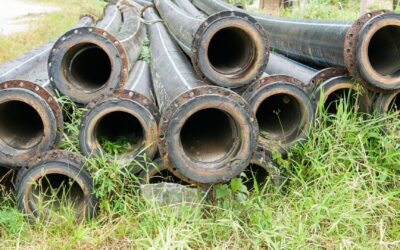Why Underground Pipe Selection Matters
Selecting the right material for underground water line installations is a crucial decision that significantly impacts long-term system performance, cost efficiency, and operational safety. In sectors such as mining, oil and gas, municipal infrastructure, and defense, water lines are exposed to highly variable underground conditions. A poorly chosen pipe can lead to premature failures, resulting in water leaks, service interruptions, expensive excavations, and, in some cases, environmental contamination or regulatory violations.
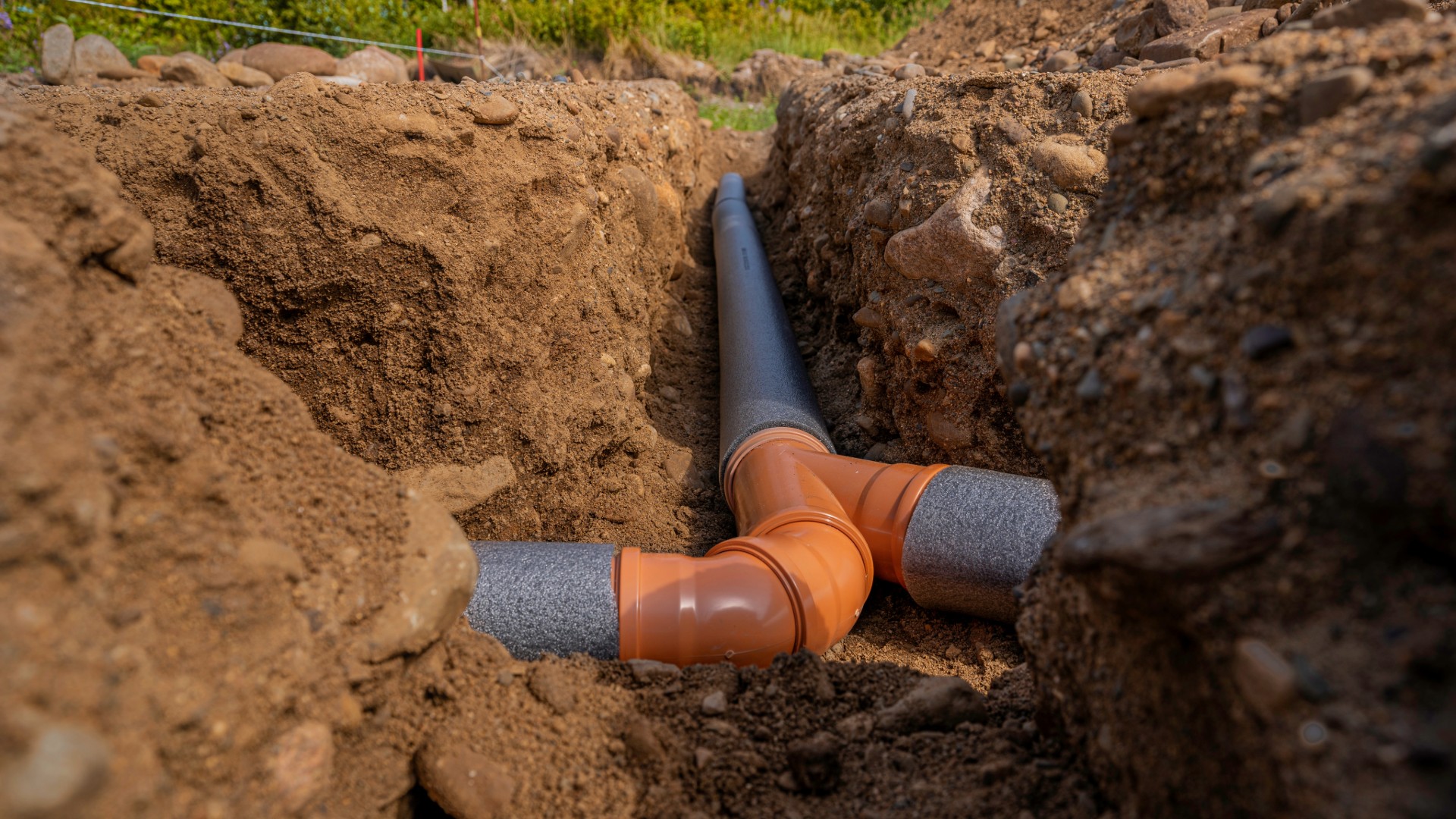
The best pipe for underground water line applications is not a one-size-fits-all choice. Instead, it must be carefully matched to the project’s technical and environmental requirements. Selecting the best underground pipe is critical in areas with shifting soils, corrosive contaminants, or fluctuating pressure. When materials fail to perform under pressure, shifting soils, or chemical exposure, organizations incur not just replacement costs but also indirect losses from downtime, safety incidents, and reputational damage.
That’s why key decision-makers, procurement heads, engineering managers, project contractors, and government buyers must collaborate early in the project design phase to assess material options. Their selection has a direct influence on a project’s return on investment (ROI), regulatory compliance, and service reliability. Selecting the most suitable pipe for an underground water line ensures compliance with industry standards and prevents costly errors.
Ensuring that the right type of pipe is used the first time, especially when specifying the best pipe for underground water supply line, minimizes future disruption and supports sustainable infrastructure development. Using the best underground pipe helps reduce unplanned downtime and increases operational efficiency. Ultimately, selecting the best pipe for underground water line and the best pipe for underground water supply line supports safer, more reliable water networks in any industry.
Understanding the Requirements of Underground Water Line Projects
Choosing the best pipe for underground water line installation begins with a clear understanding of the physical environment in which it will operate. Subsurface conditions vary widely and can impose significant stress on piping systems. Factors such as soil movement, load-bearing capacity, moisture levels, and temperature fluctuations all affect pipe longevity and structural integrity. For example, in areas with high seismic activity or unstable soil, flexibility and joint integrity become critical considerations when selecting the best pipe for underground water line performance over time.
Each industry brings its own set of operational demands. Municipal water systems prioritize ease of maintenance and compliance with regulations. Military and naval facilities often require high-resilience materials that can withstand both environmental and physical stress. In oil and gas or mining operations, chemical resistance and pressure ratings are essential due to corrosive soil conditions and high flow requirements. Selecting the best pipe for underground water line in these sectors means evaluating a range of technical variables in relation to the application’s risk tolerance and performance expectations. It’s not just about durability. It’s about ensuring that the chosen pipe can meet sector-specific challenges without compromising reliability.
Additionally, compliance with industry standards, such as ASTM, ISO, or AWWA guidelines, is non-negotiable. These standards govern critical factors, including pressure class, material composition, and installation practices, ensuring that pipes are suitable for their intended purpose. Long-term performance also hinges on adherence to specifications related to lifespan, structural strength, and leak prevention. Choosing the best pipe for underground water line also requires aligning with these compliance benchmarks to avoid compromising system integrity or regulatory approval.
When all these factors are aligned, environmental conditions, industry needs, and compliance requirements, buyers and engineers can confidently identify the most effective solution for underground water transport and ensure that the best pipe for the underground water line is selected to maximize performance and longevity.
Comparing the Most Common Pipe Materials
Selecting the right pipe material is crucial for ensuring optimal performance, durability, and cost-effectiveness in underground systems. The best pipe for an underground water line must withstand physical stress, chemical exposure, and environmental changes across various industries. Below is a concise comparison of common materials used in underground water infrastructure.
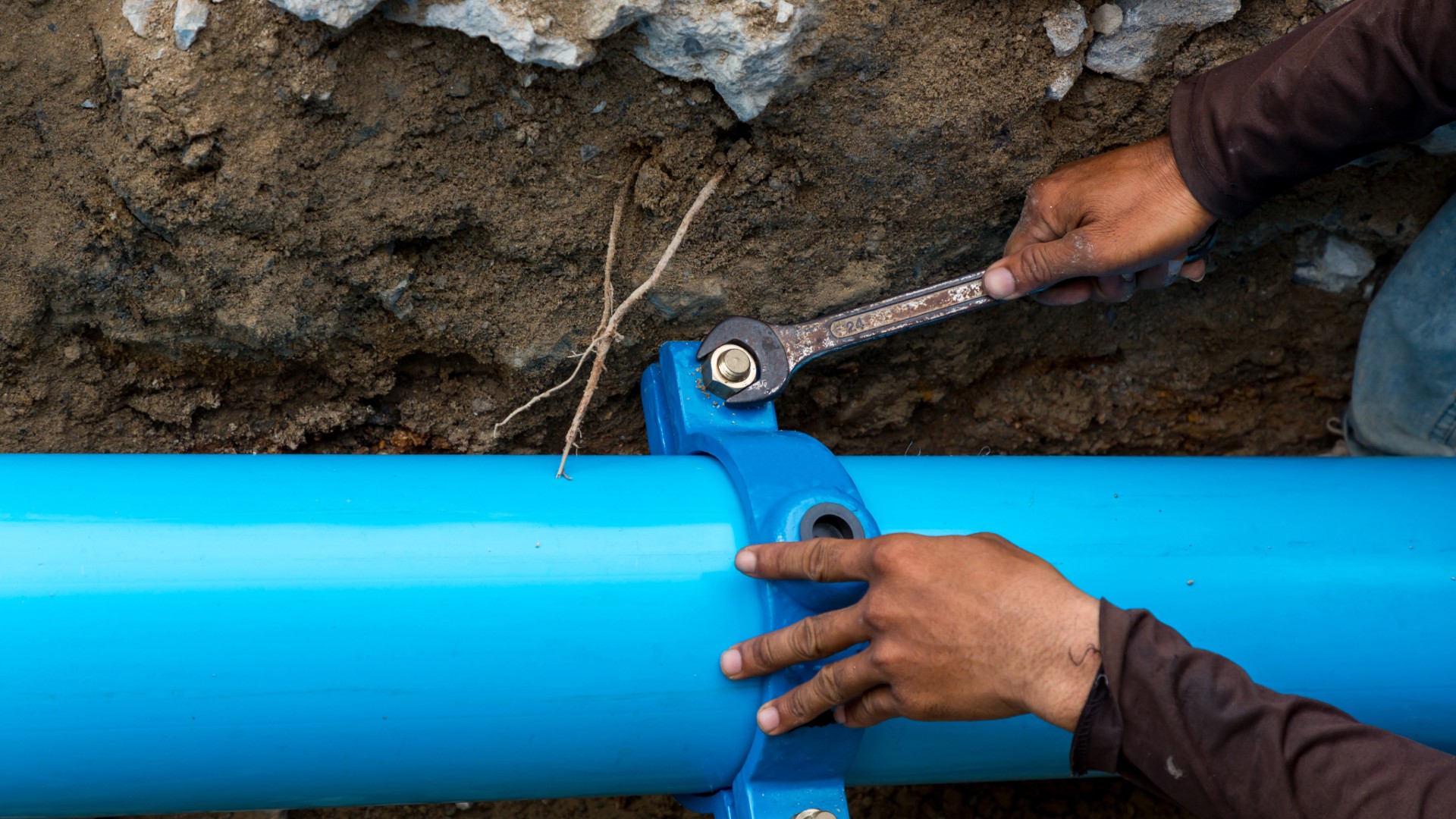
High-Density Polyethylene (HDPE) is widely regarded as the best underground pipe for high-demand applications. Its flexibility accommodates soil movement, and fusion-welded joints reduce leaks and contamination. With its strong resistance to corrosion and a service life exceeding 50 years, HDPE remains the preferred pipe material for underground water supply lines in various sectors, including mining, military, and municipal distribution.
Copper offers longevity and resistance to microbial growth but lacks flexibility and is costly. It is rarely chosen as the best pipe for underground water line in large-scale or industrial applications due to its rigidity and installation expense.
PVC and PVC-O are cost-effective and easy to install, making them common in residential and municipal systems. PVC-O offers superior strength and pressure resistance compared to standard PVC. While less flexible than HDPE, PVC is still considered one of the best underground pipe options for stable, low-risk environments.
Chlorinated Polyvinyl Chloride (CPVC) is suitable for higher temperatures and chemically aggressive conditions. Though not universally preferred, CPVC has clear advantages in niche scenarios and is occasionally selected as the best pipe for underground water line where thermal or chemical resistance is needed.
Ultimately, choosing the best pipe for an underground water supply line depends on matching material properties to the project’s environmental, technical, and regulatory requirements. With the right assessment, decision-makers can confidently specify the best underground pipe for lasting performance.
HDPE vs CPVC vs PVC – Which Is the Best Pipe for Underground Water Line?
Determining the best pipe for an underground water line depends on project demands, site conditions, and long-term performance goals. Each material offers distinct advantages, but only some meet the full spectrum of underground infrastructure requirements.
HDPE stands out for its flexibility, durability, and resistance to corrosion, making it the best pipe for underground water lines in harsh or complex environments. Its use in trenchless installations, such as directional drilling, minimizes surface disruption and reduces overall project costs. These qualities make HDPE a leading choice for military, mining, and municipal systems.
CPVC is best suited for specialized applications involving high temperatures or chemically treated fluids. It provides strong impact resistance and thermal stability. While not always selected as the best underground pipe for broad use, CPVC is ideal where chemical compatibility and heat resistance are critical.
PVC and PVC-O remain widely used in cost-sensitive municipal systems with stable soil and moderate pressure. PVC-O offers enhanced strength over standard PVC. Though less resilient than HDPE or CPVC, PVC is still considered one of the best underground pipe materials for budget-conscious projects.
For engineering and procurement leaders, selecting the right material is a strategic decision. HDPE continues to lead as the best pipe for underground water supply line, delivering long-term value, leak prevention, and system reliability across a range of demanding applications.
Installation Considerations That Affect Pipe Selection
Choosing the best pipe for underground water line projects involves more than comparing specifications; it requires aligning material choice with installation conditions and long-term goals.
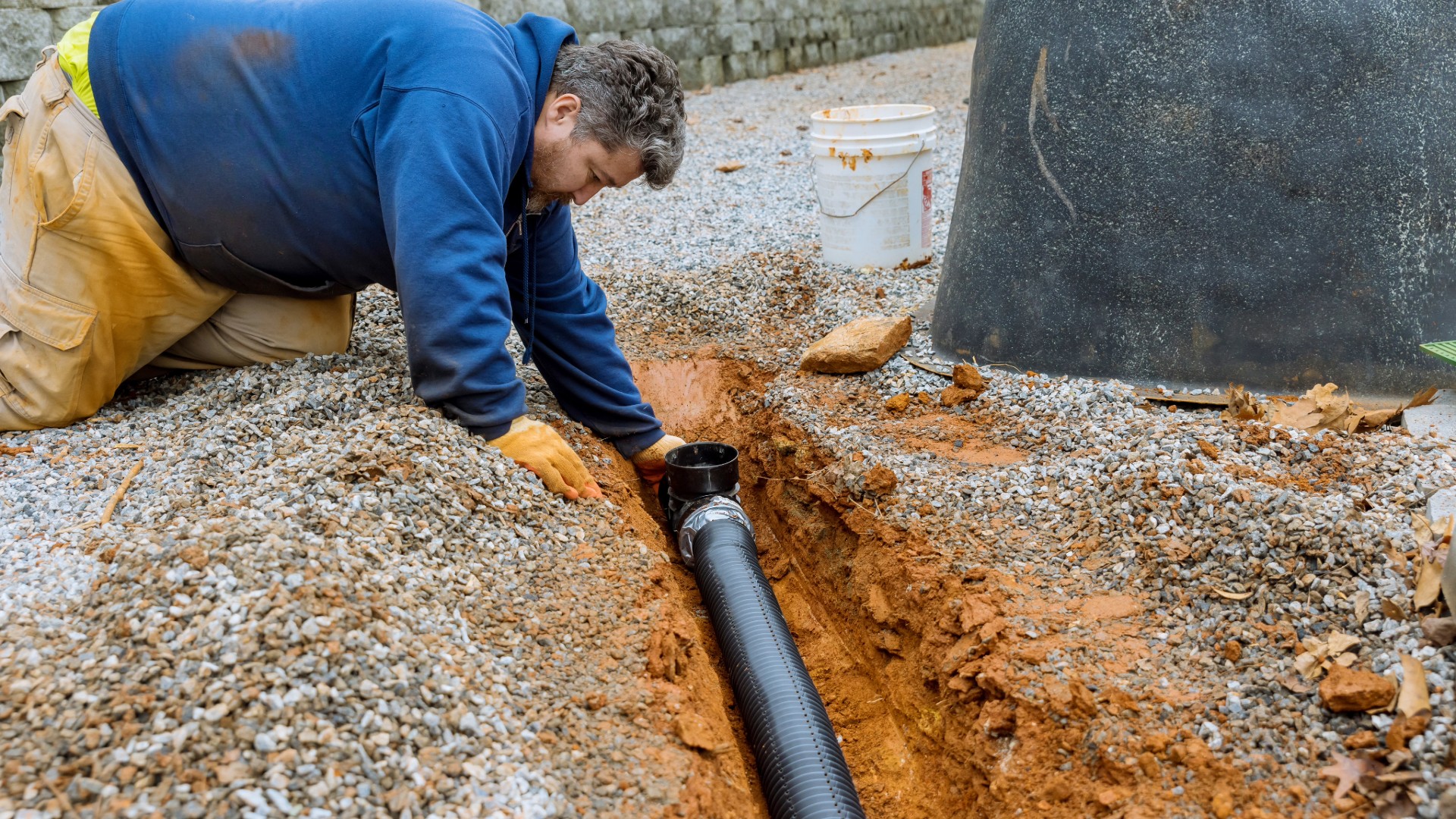
Soil type and terrain are major factors. Expansive clay, rocky layers, or shifting ground call for flexible materials. HDPE is often preferred in seismic or unstable areas due to its ability to bend without cracking, making it the best pipe for an underground water supply line in high-risk zones. In contrast, rigid materials like PVC or copper may fail under the same conditions.
The installation method also matters. Traditional trenching can be disruptive and expensive in urban or environmentally sensitive zones. Trenchless methods, such as directional drilling, minimize surface damage and expedite installation. HDPE, available in long coils and joined with fusion welding, is ideal for trenchless work and often selected as the best pipe for underground water line where minimal surface disruption is key.
Jointing is another key factor. Fusion-welded HDPE systems form seamless, leak-free pipelines, which are critical in pressurized or hard-to-access areas. Other materials, such as PVC and CPVC, rely on solvent or mechanical joints, which may introduce additional failure points.
For critical sectors such as mining, defense, or municipal water systems, compliance with standards like ASTM, ISO, or local codes is essential. Factoring in safety, lifecycle performance, and system downtime risks helps engineers and procurement leaders confidently select the best underground pipe for reliable, regulation-compliant infrastructure.
Real-World Applications and Case Uses
Understanding real-world performance is essential when selecting the best pipe for underground water supply line systems. Across industries, success depends on matching pipe characteristics with environmental and operational demands.
In municipal infrastructure, pipes are often buried under roads and public areas, where failures can be costly. HDPE and PVC-O are commonly used, with HDPE favored for its leak-free joints and corrosion resistance, making it the best pipe for underground water line where maintenance must be minimized.
Mining operations involve rugged terrain and harsh soil chemistry. The best underground pipe in this setting must resist abrasion, pressure changes, and chemical attacks. HDPE is preferred for its flexibility, durability, and compatibility with trenchless installation.
At military and naval bases, reliability under extreme conditions is critical. Materials like HDPE and CPVC are used to withstand coastal corrosion and freezing temperatures, ensuring long-term operational continuity. Their resistance to environmental stress makes them top choices for the best pipe for underground water line.
In the oil and gas sector, underground water systems face chemical exposure and temperature extremes. HDPE remains the best pipe for underground water supply line, thanks to its chemical resistance and structural integrity in complex field conditions.
These examples show why HDPE is consistently selected as one of the best underground pipe solutions across demanding industries.
How to Evaluate the Best Pipe Supplier
Selecting the best pipe for underground water line is only part of the equation; equally important is partnering with a supplier who can deliver consistent quality, reliability, and technical support. For procurement heads, engineering managers, and contractors, evaluating a supplier involves more than just catalog pricing. It requires a close review of credentials, quality assurance processes, and the supplier’s ability to meet project-specific requirements.
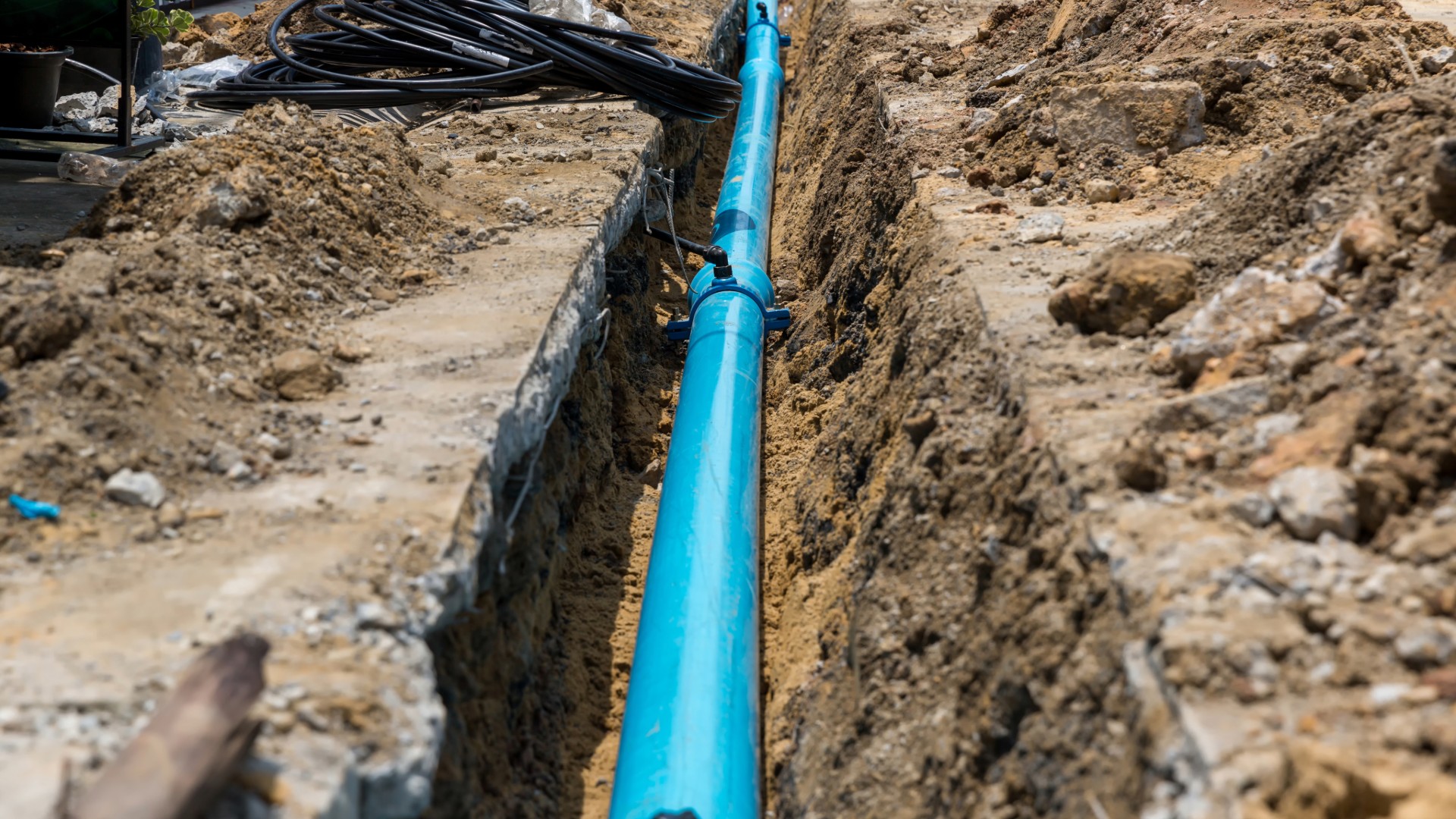
Procurement leaders should begin by verifying a supplier’s certifications and compliance with international standards such as ISO, ASTM, and AWWA. These certifications are critical indicators of manufacturing quality and adherence to engineering best practices. Additionally, reviewing material origin, technical datasheets, and third-party testing reports helps ensure that the pipe material will perform as expected in underground conditions.
When assessing potential partners, buyers should also ask key questions about quality control procedures, product traceability, and consistency across production batches. For underground applications, where pipe failure can lead to significant operational disruptions, predictable quality is non-negotiable. It is also essential to discuss a supplier’s capacity for product customization, particularly for large-scale or high-pressure systems that require non-standard sizes or joint configurations.
Delivery reliability is another critical factor. Delays in material supply can stall construction timelines, especially for government or industrial projects with strict deadlines. Suppliers that offer clear communication, accurate lead times, and logistics support reduce the risk of costly project overruns.
Above all, working with an experienced manufacturer such as DAE Hose ensures that the selection and sourcing process is backed by deep technical knowledge, application-specific guidance, and a proven track record in supplying the best underground pipe solutions to industries worldwide.
DAE Hose Solutions for Underground Water Systems
DAE Hose provides engineered solutions for underground piping systems utilized in mining, military, municipal, and heavy industrial applications. With decades of technical expertise, we assist clients in specifying the optimal pipe for underground water lines, tailored to meet project performance goals, address environmental challenges, and comply with relevant standards.
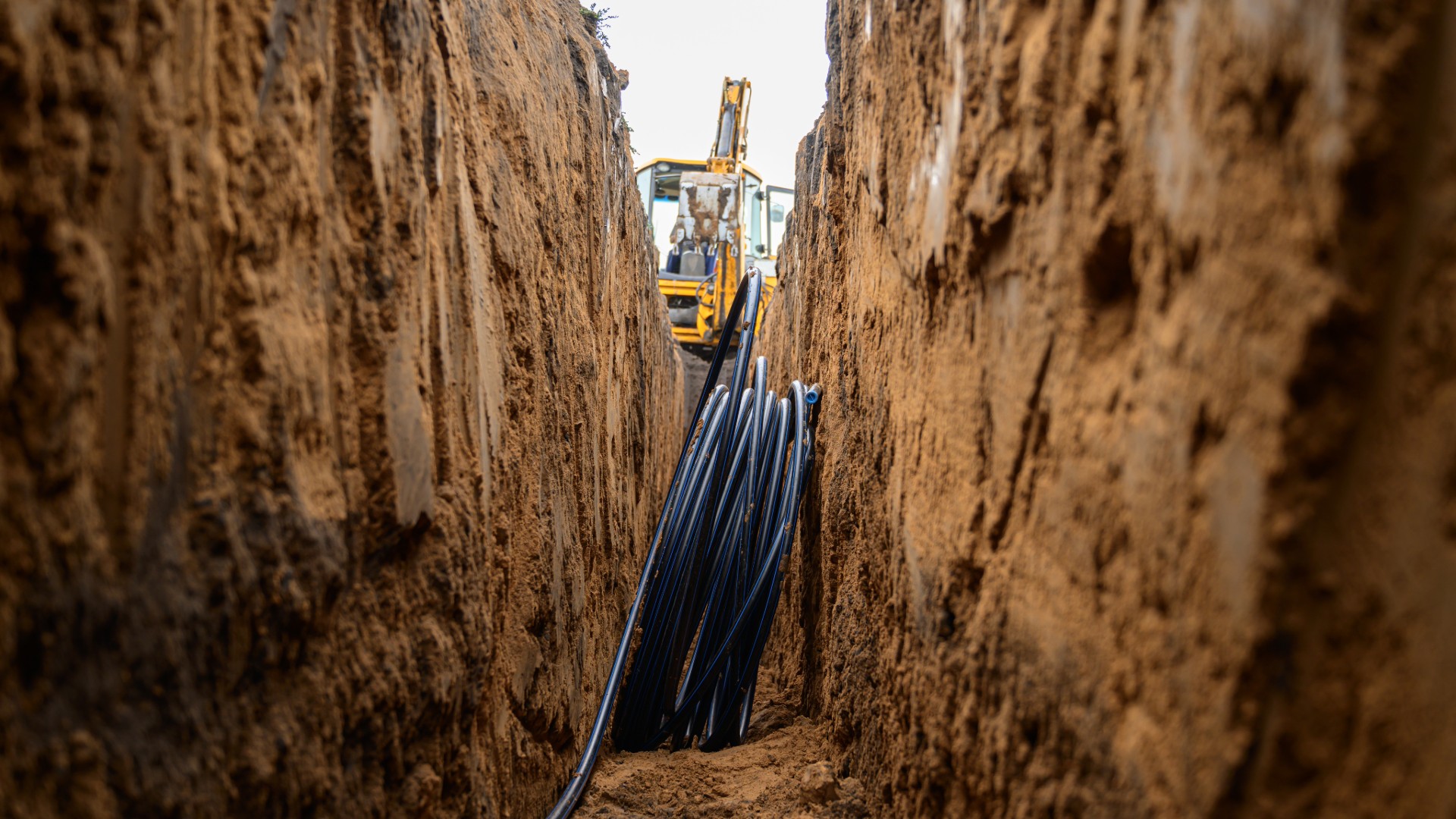
Our HDPE systems are specifically designed for long-term reliability, leak prevention, and efficient installation. Whether installed using trenching or trenchless methods, HDPE consistently proves to be the best pipe for underground water supply lines in demanding environments, such as remote oil fields, coastal military bases, and urban infrastructure zones.
DAE Hose specializes in fusion-welded HDPE pipelines that eliminate weak points found in mechanical or solvent-based joints. These seamless connections help reduce maintenance and extend system life, reinforcing HDPE as the best underground pipe for applications where integrity and performance are non-negotiable.
By offering turnkey services, including design consultation, custom fabrication, and on-site technical support, we ensure that each project achieves long-term success. For many engineering leaders, HDPE from DAE Hose is the best pipe for underground water line when installation speed, system longevity, and lifecycle value matter.
Our team is equipped to address a wide range of conditions, from corrosive soils to temperature extremes, helping you implement the best pipe for underground water supply lines in line with ASTM and ISO standards. Whether it’s a municipal expansion or a critical infrastructure upgrade, we deliver solutions that stand the test of time.
At DAE Hose, you don’t just purchase materials; you gain a strategic partner. We’re committed to providing the best underground pipe solutions, backed by unmatched precision and technical support. When the outcome depends on reliability, we deliver the best pipe for underground water line, on spec, on time, and with confidence.
Choosing the Best Pipe for Your Project’s ROI
Choosing the best pipe for underground water line installation is not just a matter of cost; it’s a long-term investment in system performance, safety, and operational efficiency. The material you select must endure the stresses of soil movement, pressure changes, temperature fluctuations, and chemical exposure without failure.
Across sectors, HDPE is consistently regarded as the best pipe for underground water supply line due to its flexibility, strength, and leak-proof fusion joints. In harsh environments, such as mining zones, military installations, and remote oil fields, HDPE offers unmatched reliability. It resists corrosion, accommodates ground shifts, and is compatible with trenchless installation, making it the best pipe for underground water line when disruption must be minimized.
The best underground pipe also needs to support lifecycle efficiency. HDPE reduces the need for frequent repairs, lowers water loss, and minimizes maintenance, which translates into higher ROI over time. This makes it especially valuable in large-scale municipal infrastructure, where long service life is essential.
CPVC and PVC-O offer benefits in specific conditions. CPVC handles high temperatures and aggressive chemicals, whereas PVC-O is often chosen for its stability and low-pressure applications in municipal systems. Yet, neither matches the long-term performance of HDPE when selecting the best pipe for an underground water line in challenging field conditions.
In fast-paced industrial projects, the speed of installation matters. The best pipe for an underground water line should not only perform well but also streamline construction. HDPE’s ability to be supplied in long lengths and joined quickly through fusion welding gives it a clear edge in this area as well.
Regulatory compliance is another non-negotiable. The best pipe for an underground water supply line must meet ASTM, ISO, or local utility standards to avoid costly rework or legal issues. HDPE meets or exceeds most of these standards and is regularly specified for critical infrastructure.
When evaluating total lifecycle cost, the best underground pipe is the one that minimizes failures, meets technical requirements, and supports uninterrupted operation. For this reason, HDPE remains the best pipe for underground water lines in nearly every industrial, municipal, and government application.
Let DAE Hose help you identify the best pipe for underground water line based on your project’s conditions, compliance needs, and long-term goals. Our experts will ensure you choose the best pipe for underground water supply line, one that delivers maximum value and performance across the lifespan of your infrastructure. Whether for defense, mining, or public utilities, DAE Hose will help you specify the best underground pipe for lasting results.

